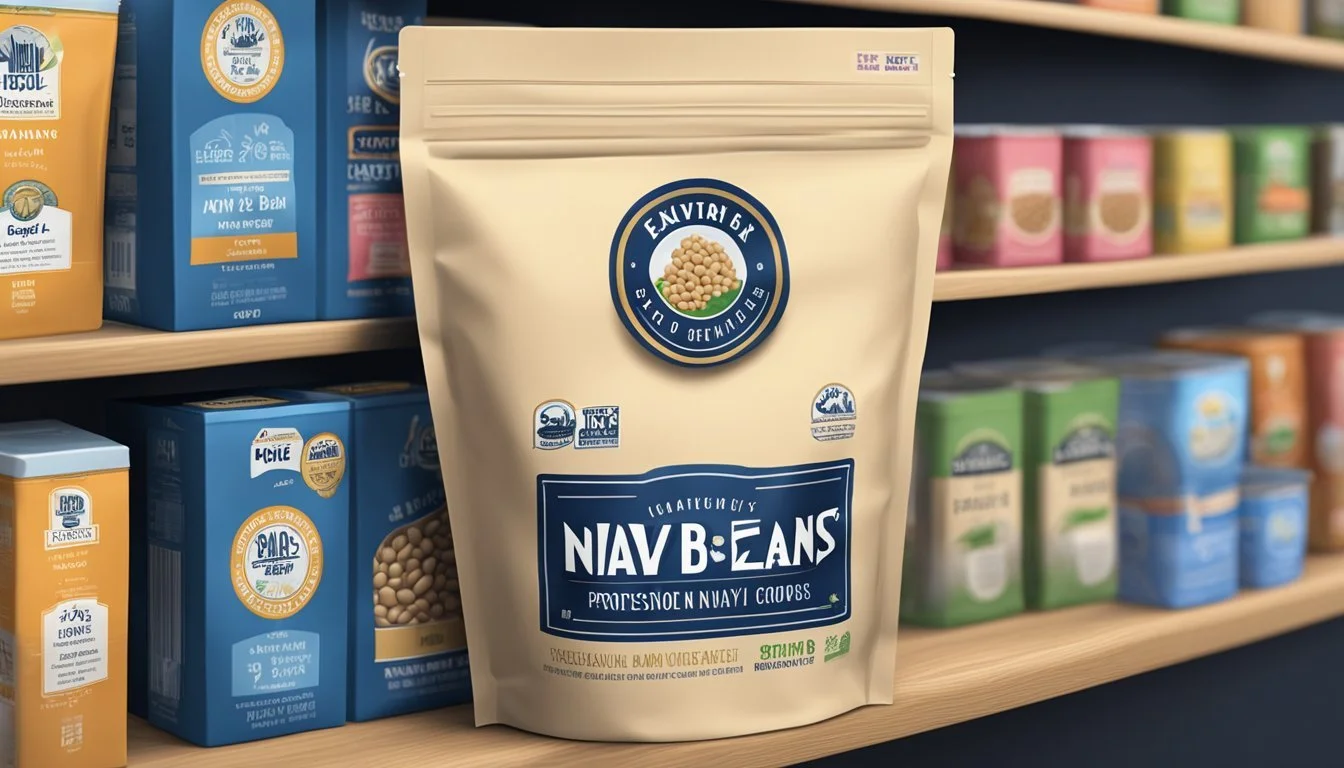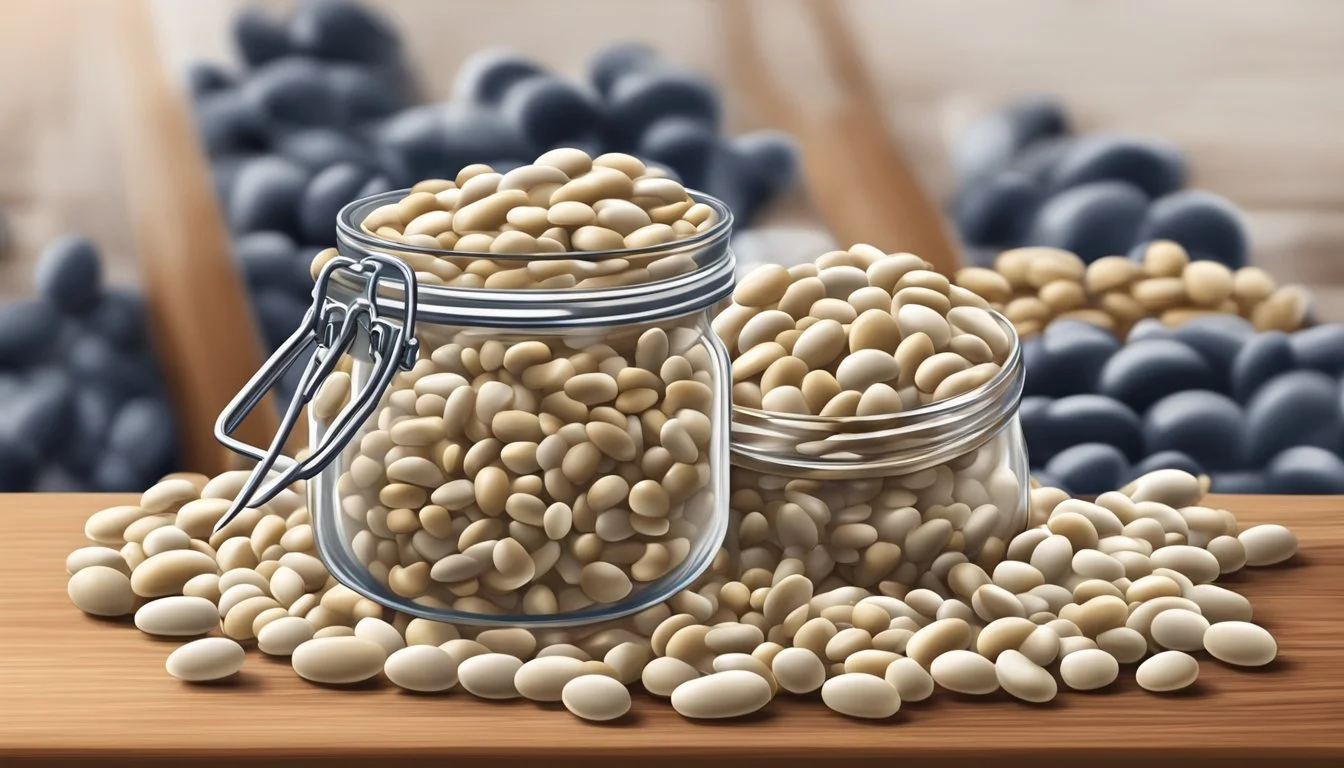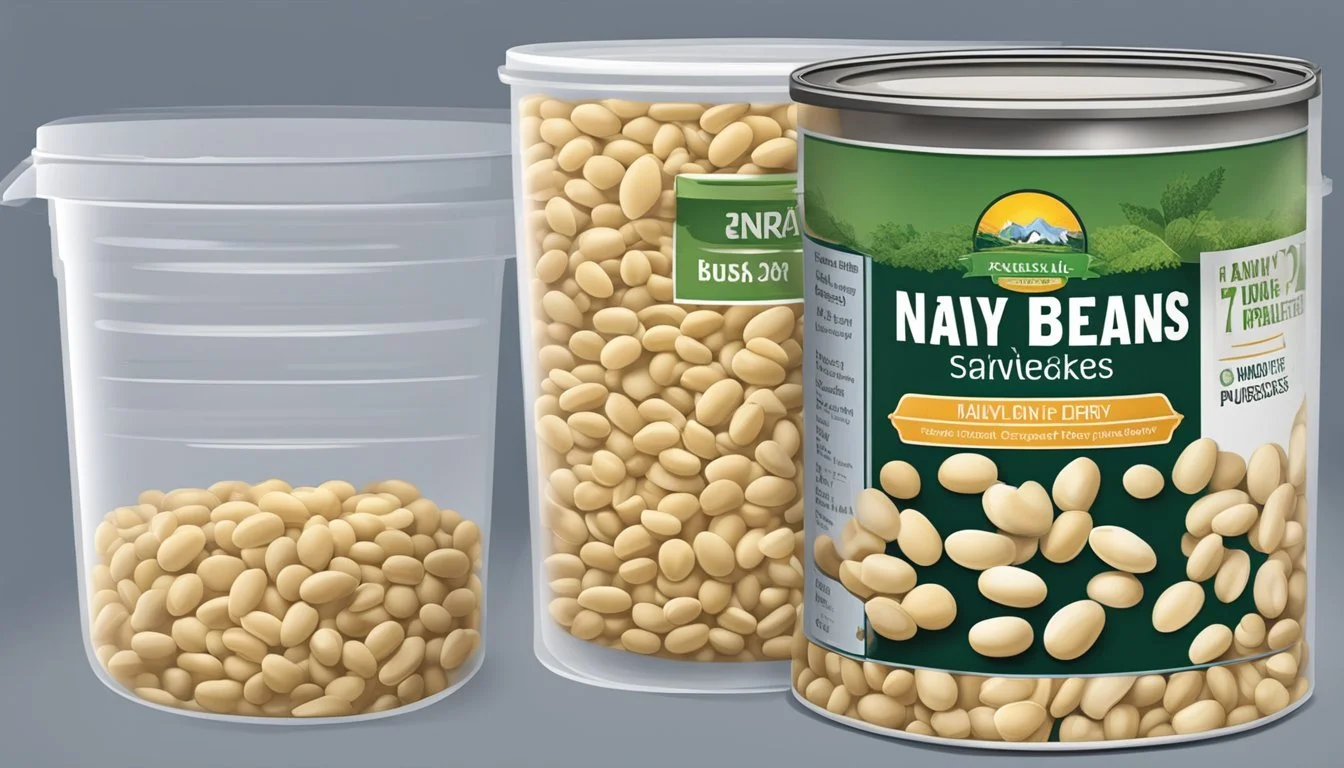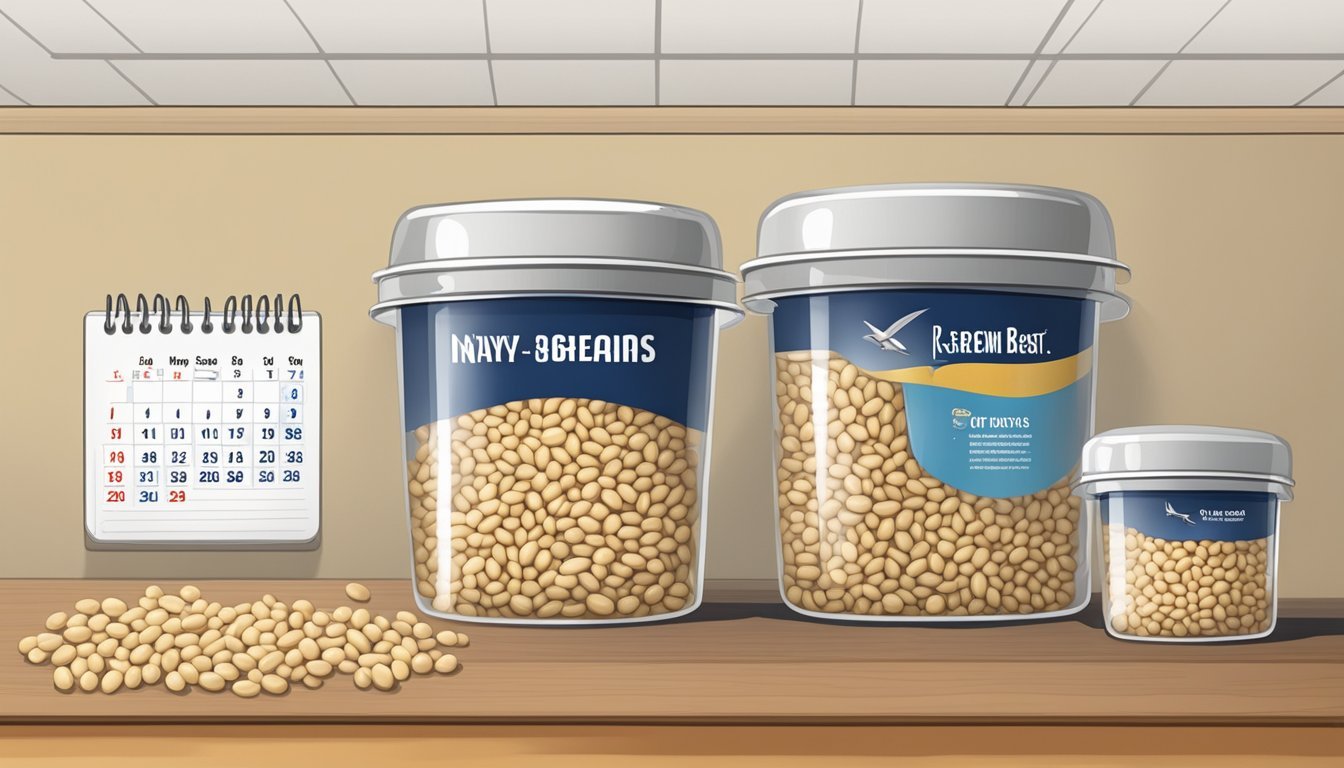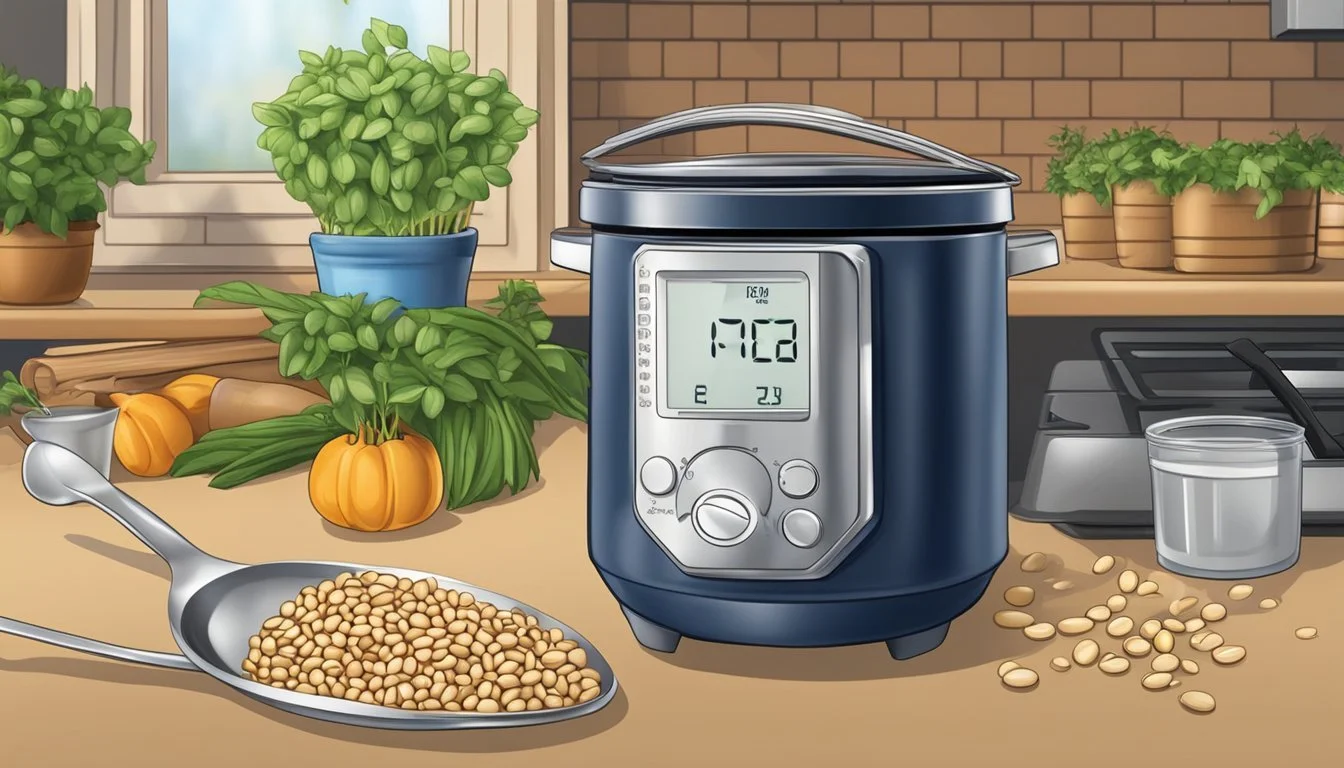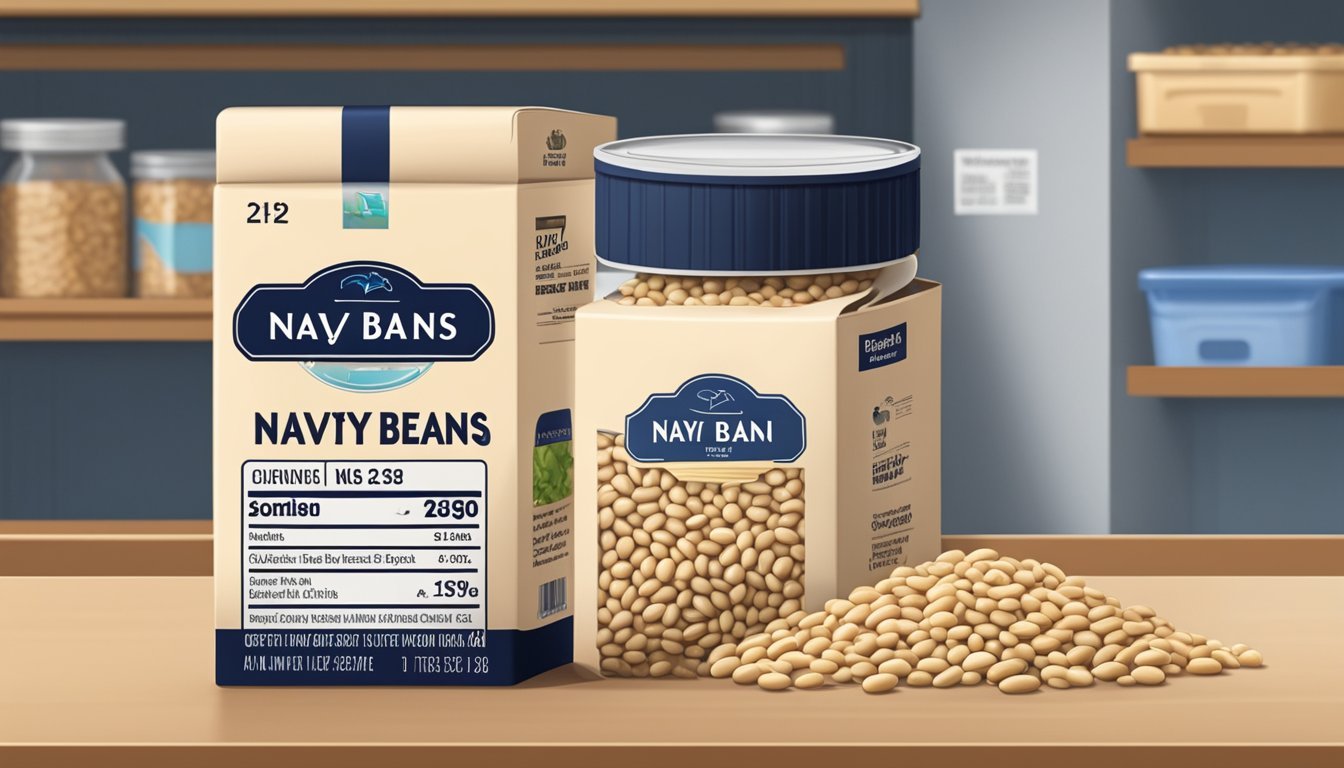How Long Do Navy Beans Last?
Shelf Life and Storage Tips
Navy beans, a variety of common beans scientifically known as Phaseolus vulgaris, are a staple in pantries due to their versatility and nutritional benefits. Rich in fiber, protein, and essential minerals such as iron and potassium, they are not only a hearty food choice but also contribute positively to a balanced diet. Like most legumes, they are also a good source of various vitamins and minerals that support overall health.
When it comes to shelf life, dried navy beans have a considerable advantage over their canned or cooked counterparts. If stored properly in a cool, dry place inside an airtight container, dried navy beans can maintain their best quality for about 2 to 3 years, although they will usually remain safe to consume after this period. Their lifespan can extend much beyond that, but with time, they may lose some of their nutritional value and take longer to cook.
Once cooked, navy beans have a shorter shelf life and should be stored in the refrigerator where they can last for about 3 to 5 days. For longer storage, cooked navy beans can be frozen and are best used within 6 months to ensure quality and taste. It is essential to refrigerate or freeze navy beans within two hours of cooking to preserve their freshness and prevent bacterial growth.
Navy Beans Overview
In this section, readers will gain an understanding of navy beans and their nutritional profile. Often prized for their versatility and health benefits, navy beans are a staple in various cuisines.
What Are Navy Beans
Navy beans, also known as haricot beans (how long do haricot beans last?), are a variety of white beans that belong to the legume family. These beans are small, oval-shaped, and typically known for their mild flavor and creamy texture, making them a popular ingredient in dishes such as soups, stews, and salads.
Nutritional Value
Navy beans are renowned for their high nutrient content, providing a rich source of fiber and protein, which are essential for maintaining good digestive health and muscle repair. They are also a good source of iron, which is vital for transporting oxygen in the blood, and potassium, which is necessary for proper muscle and nerve function. Additionally, they contain a variety of vitamins that support overall health. A summary of their nutritional value per 1 cup (cooked) is provided below:
Nutrient Amount Calories 255 kcal Protein 15 g Fiber 19 g Iron 4 mg Potassium 708 mg
Consuming navy beans can contribute to a balanced diet and offer numerous health benefits due to their nutrient density.
Proper Storage Conditions
Maximizing the shelf life of navy beans relies on maintaining ideal storage conditions. These include limiting exposure to elements such as air, light, and moisture, which can degrade the beans' quality over time.
Storing Dried Navy Beans
Dried navy beans should be kept in a cool, dry place, away from direct sunlight and heat. A pantry or cupboard, typically at normal room temperature, is well-suited for this purpose. They generally maintain best quality for 2 to 3 years but can remain safe to use beyond that if stored properly.
Storing Cooked Navy Beans
Once cooked, navy beans should be stored in the refrigerator within two hours to prevent bacterial growth. They are best used within 3 to 5 days. Ensure the container is sealed properly to avoid contamination and maintain flavor and texture.
Tips for Airtight Containers
Using airtight containers is pivotal to prevent the intrusion of moisture and air, which can spoil both dried and cooked navy beans. Particularly for dried beans, oxygen-free packaging can greatly extend their freshness and longevity.
Refrigerator vs. Pantry Storage
Differences between refrigerator and pantry storage hinge on the beans' state. Cooked navy beans require refrigeration due to their susceptibility to bacteria at warmer temperatures. In contrast, dried beans thrive in a pantry setting where it is typically dry and cool. Temperature fluctuations should be avoided as they can introduce humidity and moisture, affecting the beans' quality.
Shelf Life of Navy Beans
Navy beans, a versatile legume, have differing shelf lives depending on their state: dried, cooked, or canned. Proper storage is key to maintaining their quality and safety over time.
Shelf Life of Dried Navy Beans
Under optimal conditions, dried navy beans have a shelf life of approximately 2 to 3 years at normal room temperature. For the best quality, it is prudent to store them in air-tight containers in a cool, dry place. While safe to eat beyond this period, the quality may diminish, and they may require longer cooking times. Signs of deterioration include wrinkles, discoloration, or a musty odor.
Shelf Life of Cooked Navy Beans
Once cooked, navy beans should be consumed within 3 to 5 days when stored in the refrigerator. To extend their shelf life, cooked navy beans can be frozen, allowing them to last for about 2 months. It's important to store them in air-tight containers or freezer bags to prevent freezer burn and preserve their quality.
Shelf Life of Canned Navy Beans
Canned navy beans, unopened, can last for 2 to 5 years past their printed expiration date as long as they are kept in a cool, dry place and the can is not damaged. After opening, they share the same refrigerator shelf life as cooked beans (how long do cooked beans last?), which is up to 5 days. To store opened canned navy beans, they should be transferred to a clean, air-tight container.
Signs of Spoilage
When it comes to navy beans, certain signs can indicate that they have gone bad and should be discarded to ensure food safety.
Identifying Off Odors
Beans that have started to spoil will emit an unpleasant, musty odor. This off odor is a clear sign that the navy beans are no longer suitable for consumption. If one detects such smells, the beans should be thrown away to prevent the risks associated with spoiled foods.
Visual Indicators of Spoilage
Discoloration is one of the most obvious visual cues of spoiled navy beans. They may develop dark spots or change color significantly. In addition to color changes, the presence of mold, which can appear as fuzzy or chalky spots, means the beans must be discarded immediately. An infestation, indicated by the presence of weevils or other pantry pests within the beans, also necessitates immediate disposal.
Texture and Flavor Changes
If navy beans have an unusually hard texture after proper soaking and cooking, this may suggest they are past their prime. Additionally, any changes in flavor, particularly a sour or 'off' taste, are indicative of spoilage. In such cases, the beans should no longer be used.
Extending Shelf Life
Proper storage methods can greatly extend the shelf life of navy beans. By using techniques like freezing, adding preservatives, and employing proper cooking methods, one can ensure navy beans remain edible and flavorful for a longer period.
Freezing Navy Beans
Freezing navy beans is an effective way to preserve their quality. After cooking, navy beans should be cooled promptly to room temperature and then placed in freezer bags or airtight containers to prevent freezer burn. One must ensure that as much air is removed as possible before sealing. Beans can be stored in the freezer for up to 8 months, maintaining their texture and flavor.
Using Preservatives
Preservatives such as ascorbic acid can be used to extend the shelf life of navy beans. When storing cooked navy beans, adding a small amount of ascorbic acid to the storage containers can help prevent oxidation. Be sure to store the beans in plastic bags or airtight containers afterwards, which can further slow down the degradation process.
Proper Cooking Techniques
Cooking navy beans properly ensures they store better. One should cook beans until they are just tender to avoid splitting skins which can decrease storage life. Once cooked, beans should be stored quickly in a cool, dry place in airtight containers to minimize the exposure to oxygen, which can degrade beans over time.
Preparing Navy Beans for Consumption
Before cooking navy beans, it is crucial to prepare them properly to ensure they are clean and to accelerate the cooking process. They should be soaked to reduce cooking time, rinsed to remove debris, and cooked using appropriate techniques for the best results.
Pre-Soaking Methods
Soaking navy beans is an essential step that can be done using two primary methods:
Cold Soak: Place navy beans in a large pot and cover with about 2-3 inches of cold water. Let them stand for 8 hours or overnight, which helps to dissolve some of the indigestible sugars that cause gas.
Quick Soak: For a faster option, one can boil the beans for two minutes, then remove the pot from the heat, cover, and let them stand for 1 hour.
Rinsing and Cleaning
Once the beans have been soaked, the following steps should be taken:
Drain the soaking water and rinse the beans under cold, running water.
Check for and remove any small stones or debris that might have been missed before soaking.
Beans should be transferred to a clean pot for cooking.
Cooking Times and Techniques
The cooking time for navy beans can vary depending on the chosen method:
Stove: Place the rinsed beans in a pot, cover with fresh water, and bring to a boil. Reduce the heat and simmer for 1 to 1.5 hours, or until beans are tender.
Slow Cooker: Cook the rinsed beans on low for 6 to 8 hours without the need to watch the pot or adjust the heat.
Microwave: It is less common but possible to cook beans in the microwave; however, the timing can vary widely based on the microwave's power, typically requiring multiple 10-minute intervals on high with rest periods and added water as needed.
By following these steps, one can enjoy navy beans that are properly prepared and pleasantly palatable.
Health and Safety Considerations
When consuming navy beans, it is essential to consider health and safety to prevent foodborne illness and ensure they fit within specific dietary restrictions.
Safe Consumption Guidelines
Proper storage and preparation of navy beans are crucial for safety. Dried navy beans typically last about 2 to 3 years when stored in a cool, dry place in a tightly sealed container. After this period, while they may remain safe to eat, their quality could diminish. Heat plays a significant role in eliminating potentially harmful bacteria. Therefore, properly cooking navy beans is vital; they should be boiled for at least 10 minutes to ensure safety. Before consumption, checking for any signs of spoilage is essential. Discolored, musty-smelling, or beans showing mold must be discarded.
Allergy and Dietary Information
Navy beans are a type of legume, high in fiber and low in sodium. They are suitable for most diets, including vegetarian and vegan, due to their plant-based protein content. However, they may trigger allergic reactions in individuals allergic to legumes. Navy beans should be consumed in moderation and within the recommended dietary guidelines to maintain a balanced nutrient intake.

